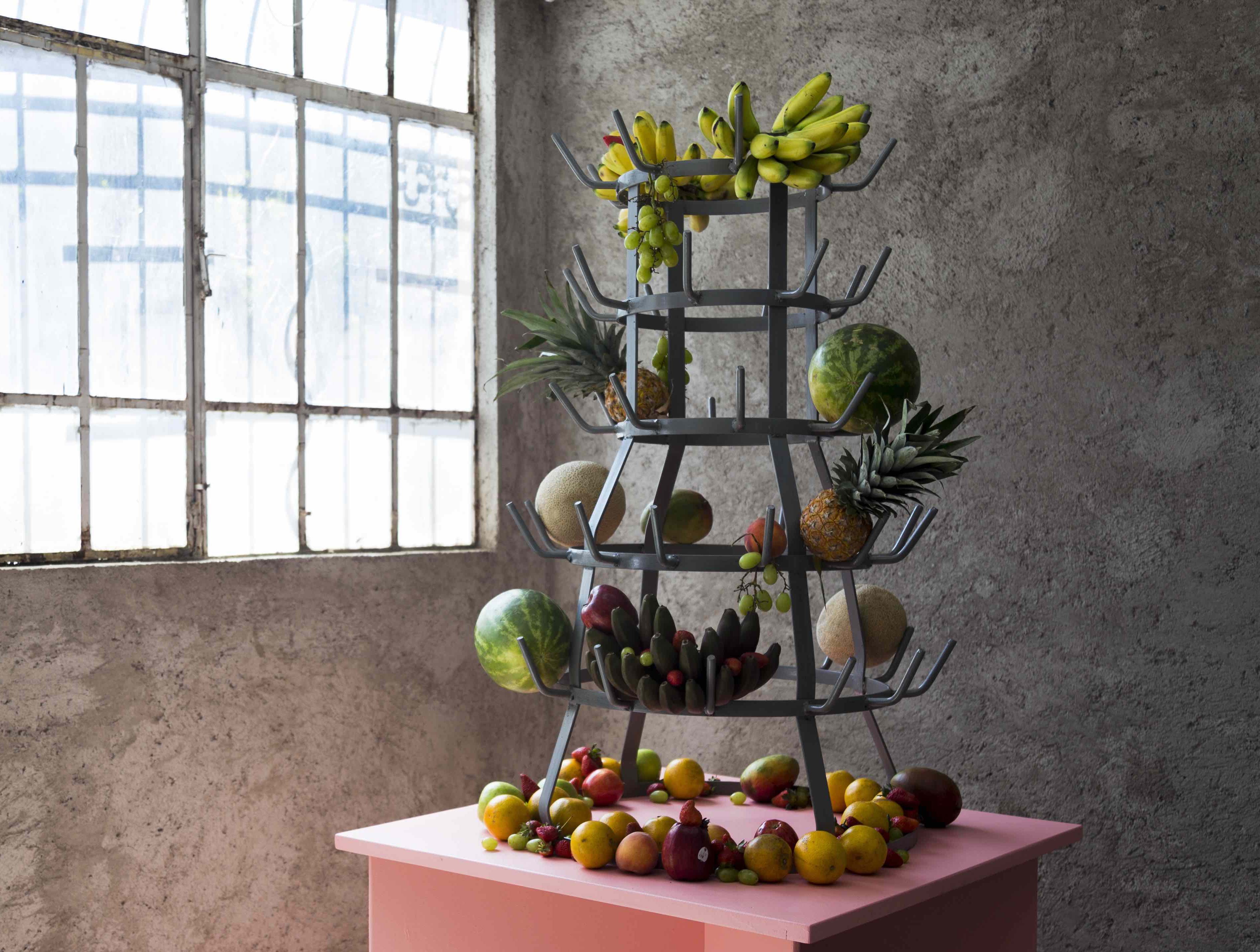
Review
Cronofagia: Tianguis of Culinary Memories
by Nicolás García Barraza
Tour of Islera, the New Art Space in La Merced
Reading time
6 min
One of the options for getting to Islera, the one I probably enjoy most, is to take the Metro’s Line 1 and to get off at Merced station. Maybe it’s because of the market environment: people walking around with huge sacks packed with objects I can’t recognize, ladies with empty mesh bags that they’ll soon fill with food, and a few other characters bearing a tired and distant look. You feel the crowd, the hubbub, the liveliness of the market as soon as you leave the train and go up the stairs; you can’t help but recognize that you’re in one of the most emblematic spots in all of Mexico City.
La Merced is one of the city’s most important and most crowded markets, a meeting point for retailers and wholesalers that surpasses the buildings and spreads out throughout the streets, turning the entire neighborhood into a center of commerce with such an eclectic and immense offering of products that it reminds me how tumultuous and diverse the city itself is. Getting to Calle Adolfo Gurrión requires crossing several stalls of sports shoes and backpacks, stands of candies and loose cigarettes, of typical quesadillas and garnachas. The tour doesn’t end there, since as you leave that section you walk down the street passing kitchen utensils, clay pots, table stoves, etc., and still more food stalls.
Islera is just a couple of blocks from the market, in a part of the street where the crowd and the buying and selling are barely noticeable. The property’s construction began in 1925 and housed more than four generations of the Montes de Oca family, as well as a medical office, an egg-selling business, and a cocina económica. The house was vacated in 2015, but it was only in 2019 that Kristell Henry and Violeta Ortega, directors and founders, began renovating the place with the aim of turning it into an exhibition space.
Cronofagia, the project’s first group exhibition, displays a special interest in the link between food and memory. Food appears as a symbolic vehicle that permeates both collective and individual memory, something capable of sending us back to times past. Especially in relation with the site, food strengthens the idea of belonging, and also plays a key role in the construction of identity. For this reason, the show is made up of works that, more than mere representations of these themes, serve as containers of meaning. In Henry’s words, the show is an “invitation to a journey through time that solicits all our senses, that seeks to provoke experiences induced by involuntary memory in those who perceive and consume it.” Cronofagia turns to food as a creative medium, just as Sophie Calle did in 1997 with The Chromatic Diet, a photo series showing the meticulous diet that the French artist undertook for a week. The imposed menu refers to Maria Turner’s unique, occasional diet, consisting of eating food of the very same color each day. Maria Turner is a character in Paul Auster’s novel Leviathan, a character inspired by Sophie Calle.
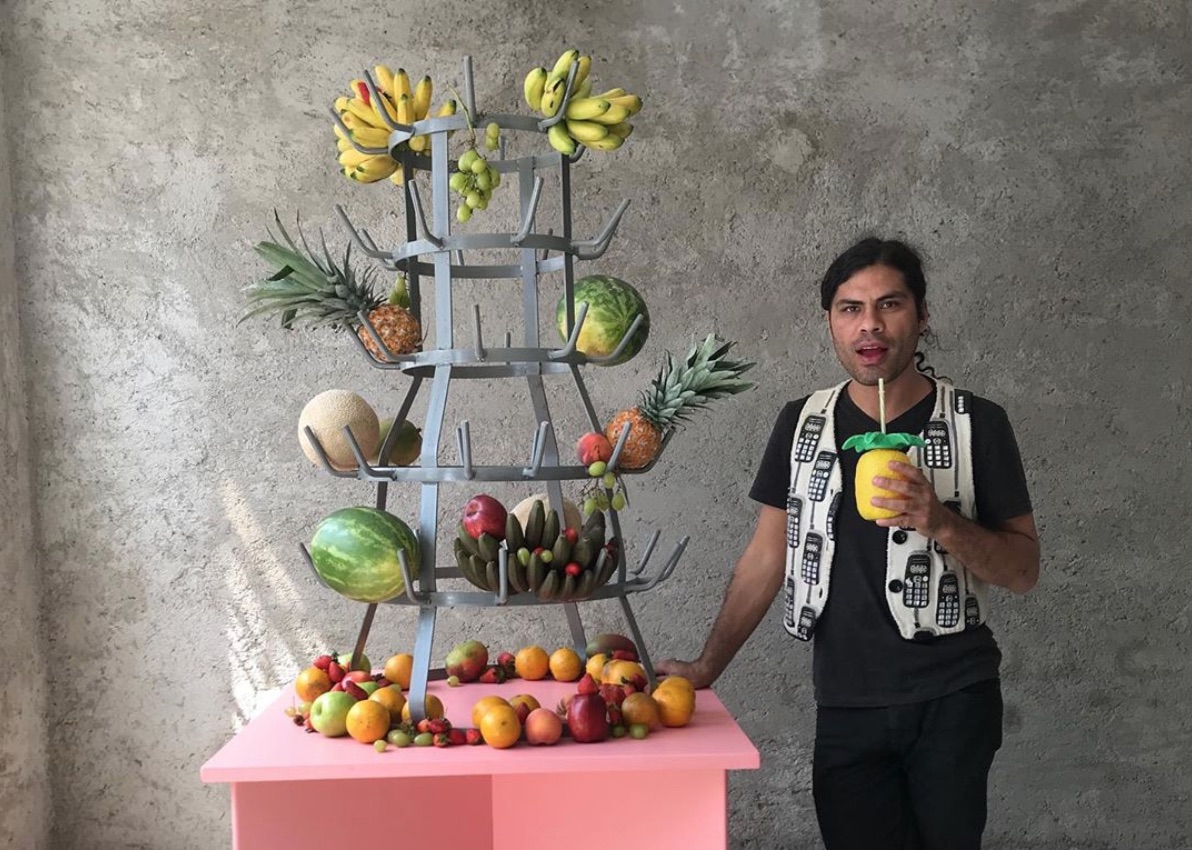
The eight participating artists put forward food and its consumption as a kind of affective passage: of archive and memory, of desire and delirium. An act capable of recalling the past and imagining a possible future. The piece that initiates the exhibition enjoys impeccable natural light; it’s a tropicalized version of Marcel Duchamp's Porte-bouteilles (1914), reinterpreted by Chavis Mármol. With this work, the artist doesn’t just aim to make reference to art history, but also to re-contextualize the concept of the “ready-made” and to “appropriate it as an act of aesthetic transgression…garnished with the colors, flavors, and textures of the neighborhood.”
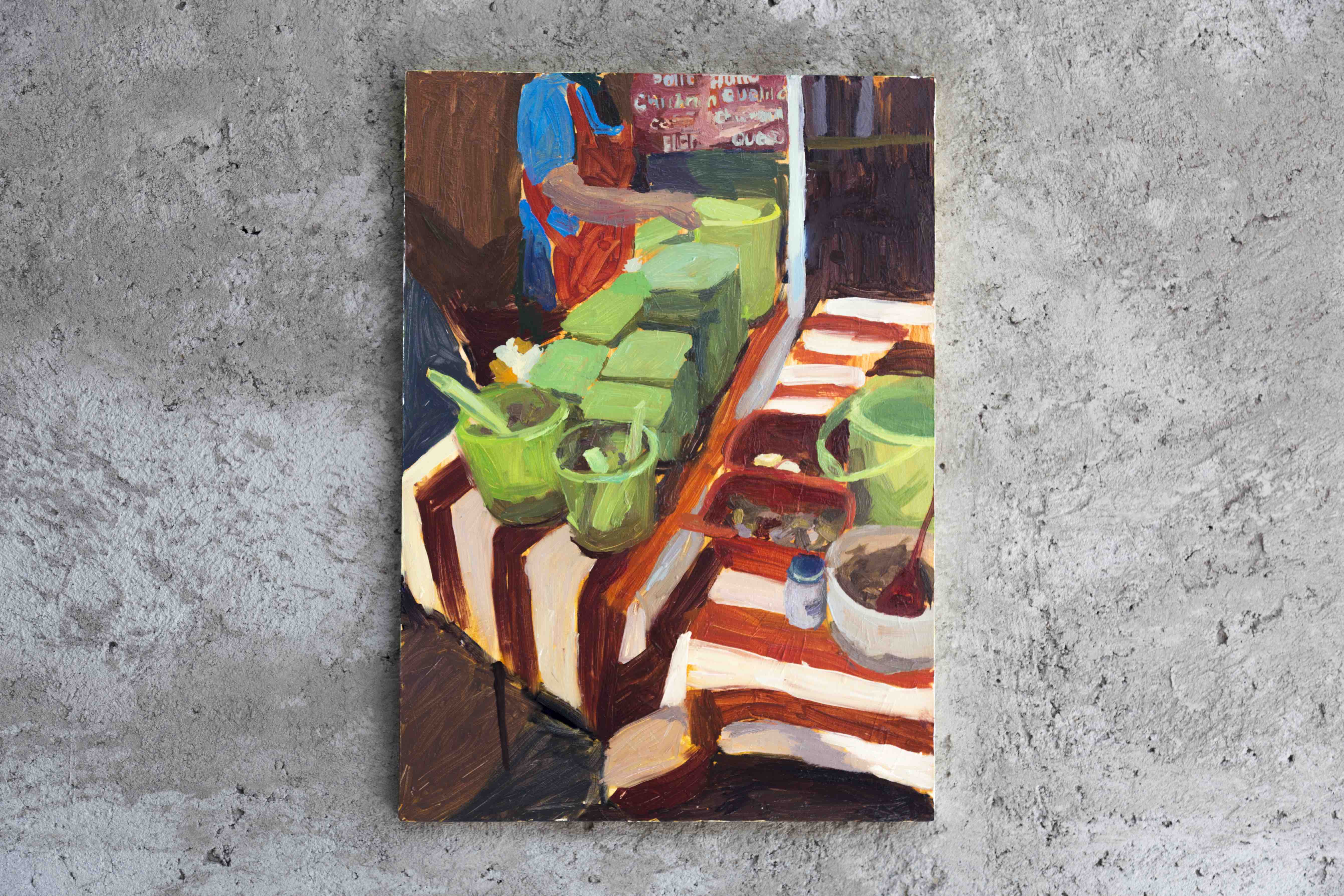
In her still lifes, Paulina Lozano reproduces with captivating precision the quesadilla stands one can easily find in any corner of the city. The paintings led me to reflect on my own condition as urban pedestrian and occasional consumer of street food; such everydayness influences my configuration as an individual and perhaps as a Mexican.
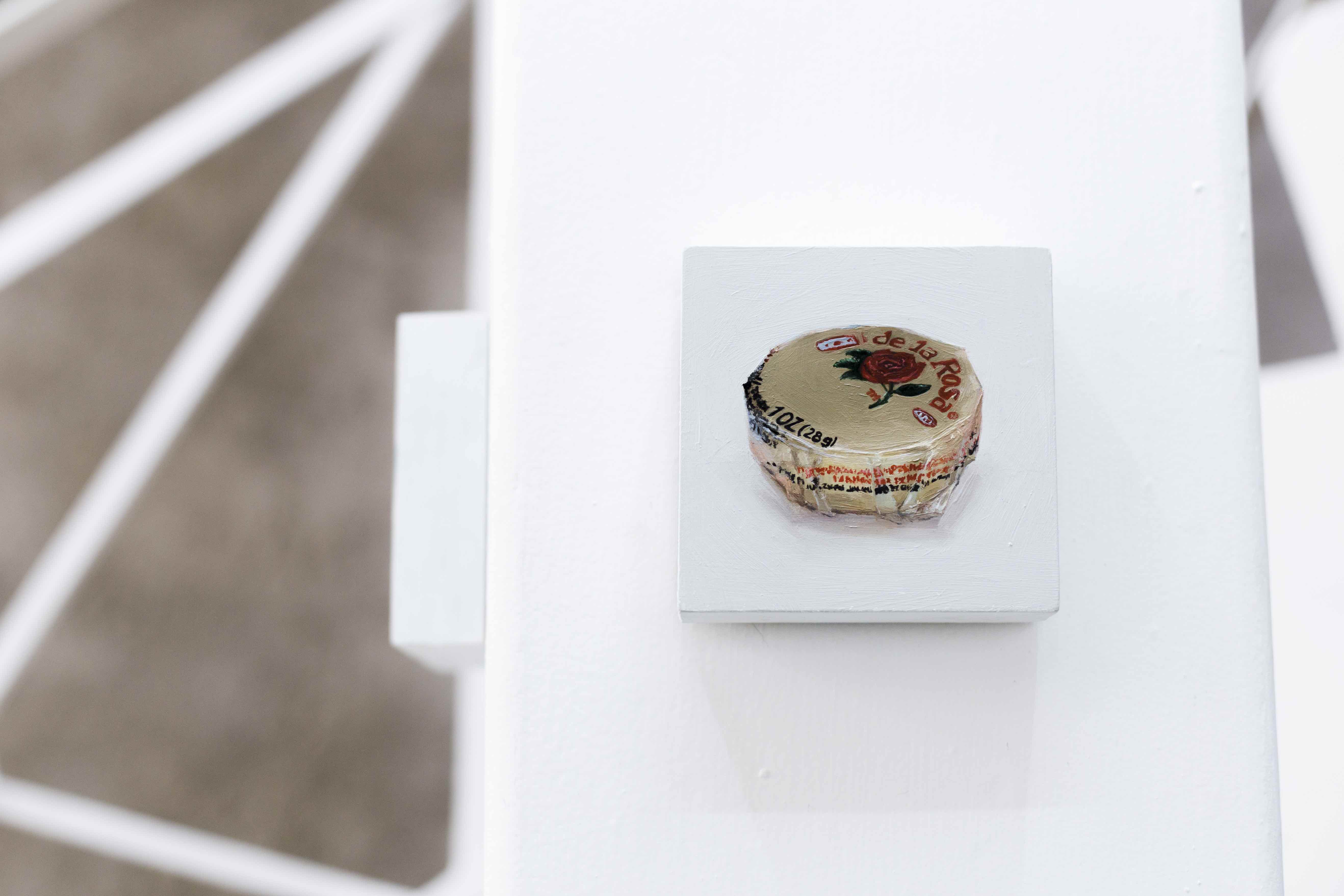
Circe Irasema’s Mazapán and Dragonzito form part of Placebos, a series of small-format paintings portraying different popular sweets that the artist and, most likely, the viewer consumed during childhood and adolescence. In my conversation with the painter, she explained that these candies often serve as affective substitutes; she mentioned that “consumption by nostalgia is the link we maintain with these items,” which can be just as addictive as any medication.
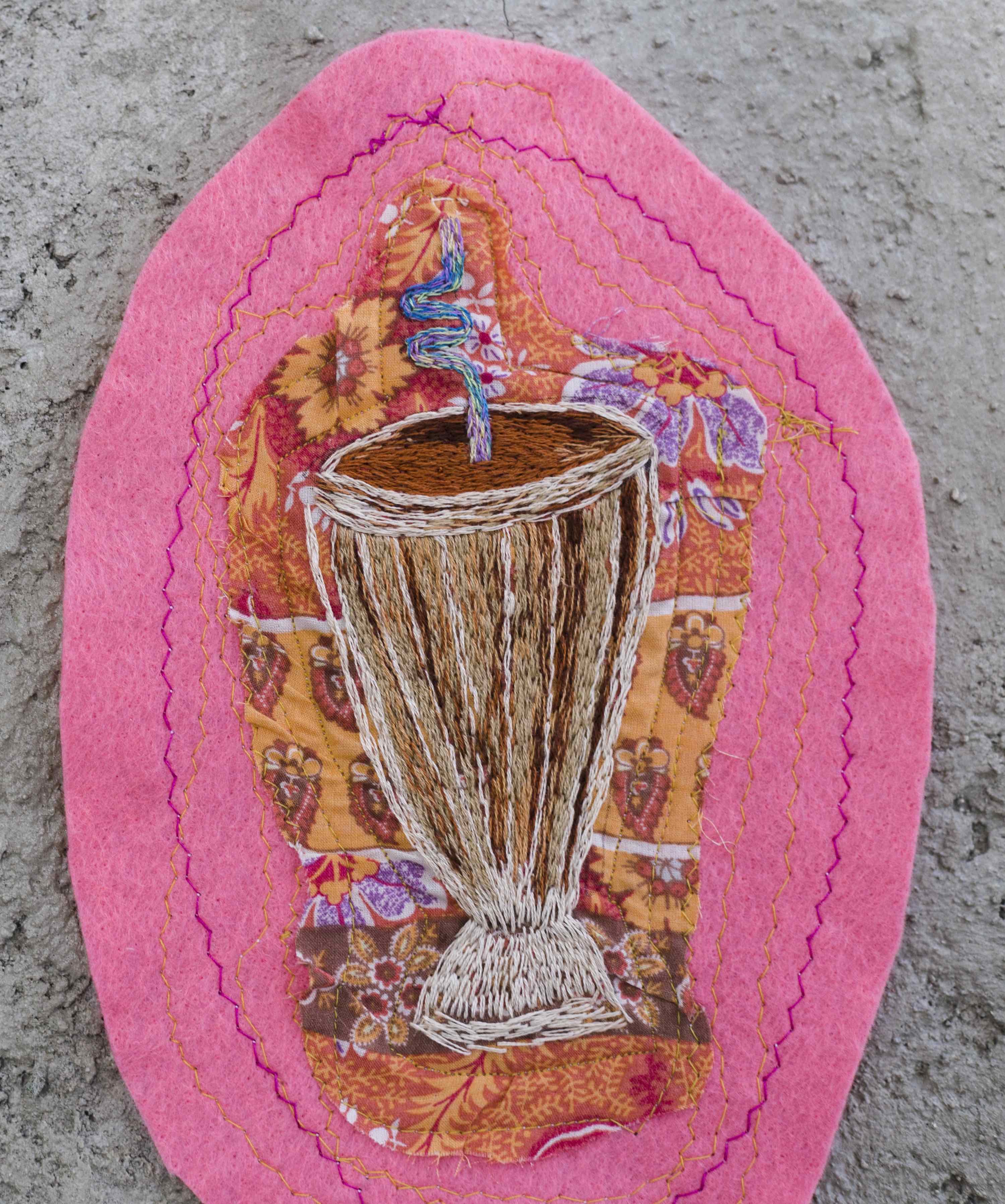
Ylia Bravo Varela also evokes a time past in her embroidery, in which she reproduces dishes evoking her childhood during the nineties, like the smiling bacon and eggs, puppy-shaped jello, pastel-colored milkshakes, octopus-shaped pepperoni, and ketchup.
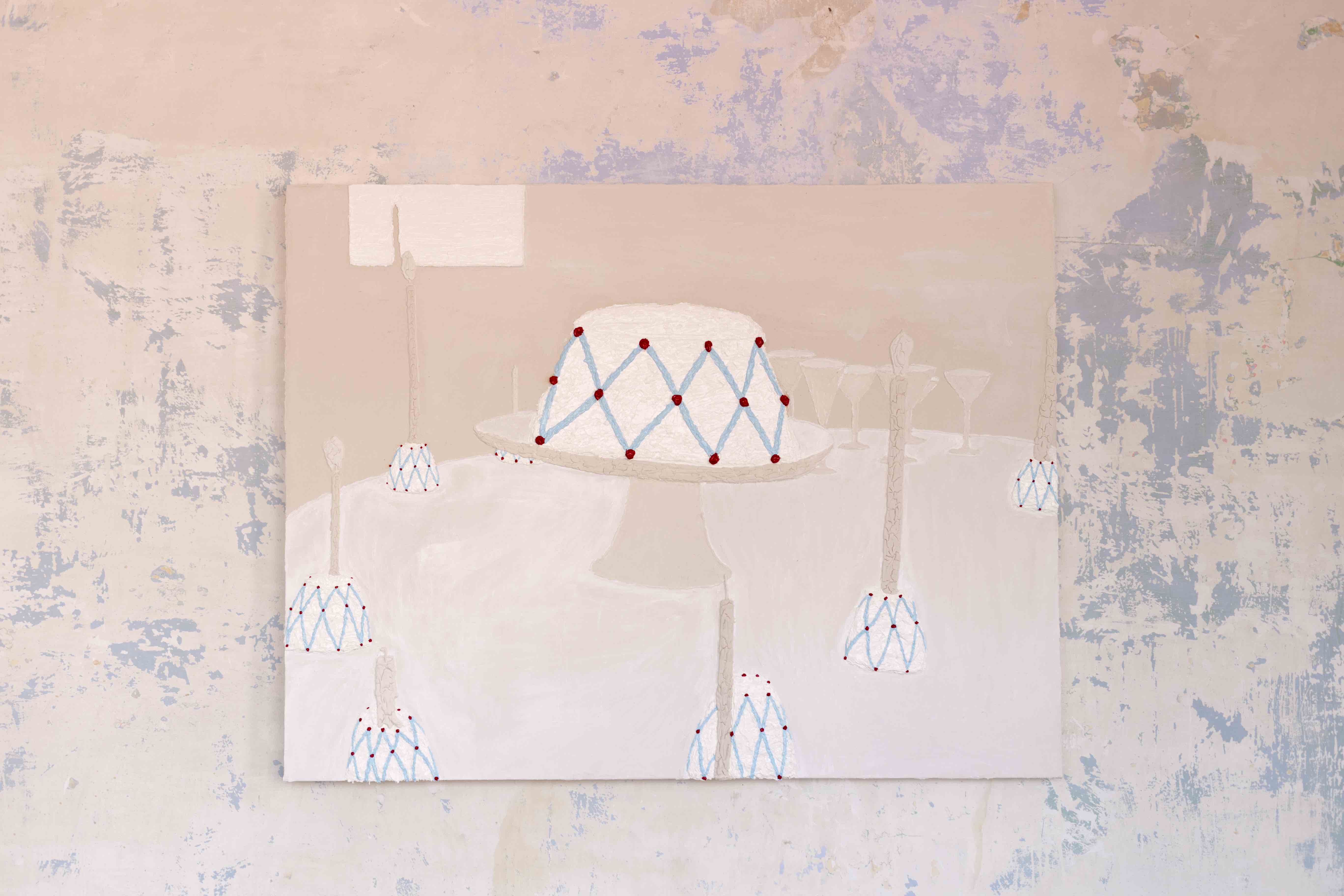
Beth Barbosa’s piece comes from her family archive, specifically from her father’s birthday celebration. The painting alludes to the emotional attachment that food and its consumption promote in human beings, in this case the ties binding Barbosa and her family. The oil texture deliciously resembles the consistency of a cake topped with meringue.

The duo Ingesta Corp. takes up the figure of Ehécatl, a deity from Nahuatl cosmology associated with the wind, in order to produce a playful piece made with wire and subsequently covered with caramel using the wind turbine of a cotton candy machine. The installation aims to “access an ancestral dimension of common historical memory,” while symbolically linking pre-Hispanic iconography with a traditional sweet. Finally, the works of Irving Cruz make us look at waste and social decomposition, nausea, immorality, bad habits, and fear.
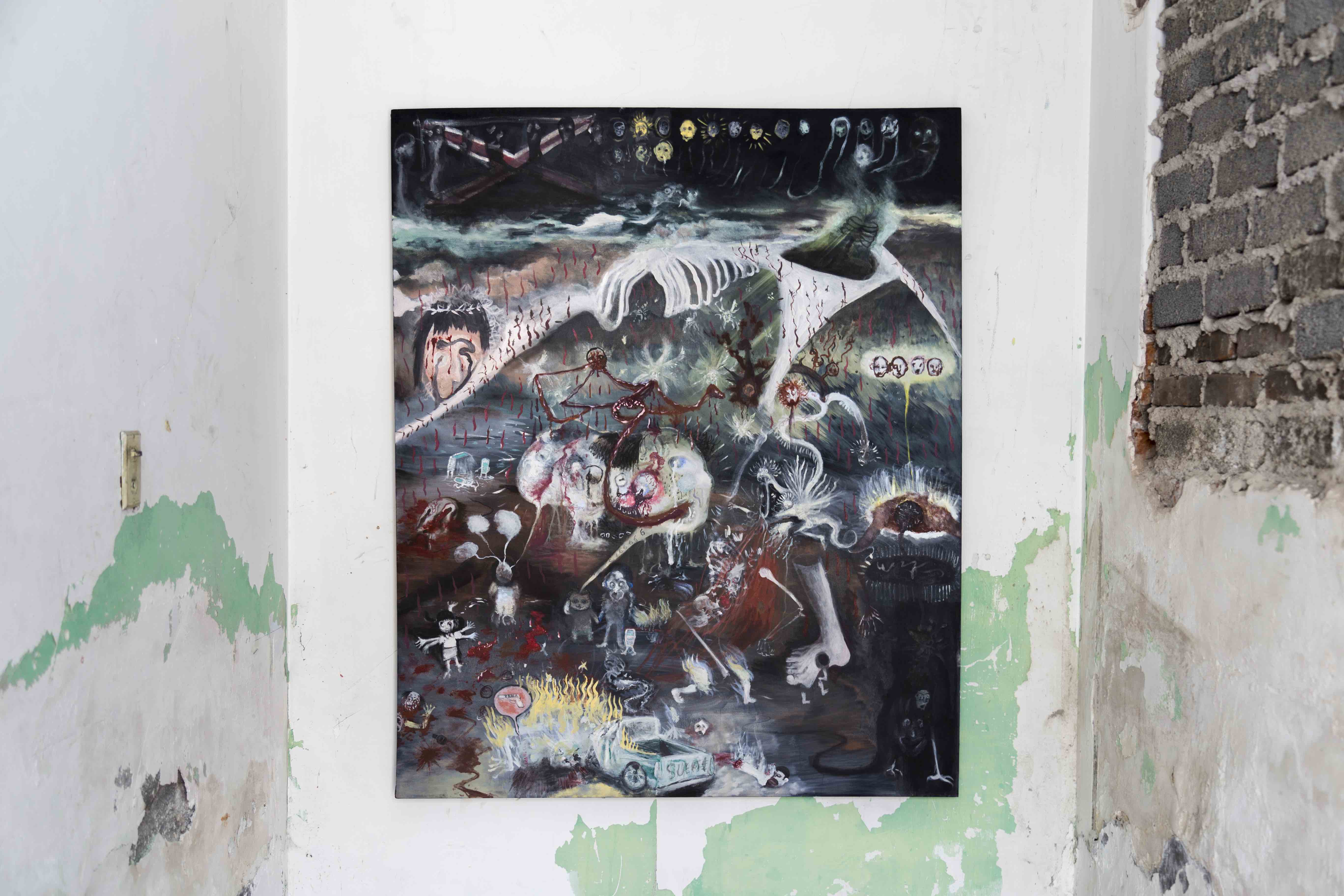
In my tour of the neighborhood and the space, food was a constant element, something that surrounded and nurtured the market and its people; it’s for this reason that Cronofagia works very well as Islera’s first exhibition. The social bond that food provides, as well as food’s capacity for remembrance, make the exhibition an open invitation to the neighborhood and to artists from different disciplines to get involved with the space, to make it their own. The project seeks to promote the artistic creation and experimentation of emerging talent, as much locally as from other places, with the purpose of establishing active dialogues that offer a look, perhaps especially current, at culture and contemporary art in Mexico.
Published on March 26 2020